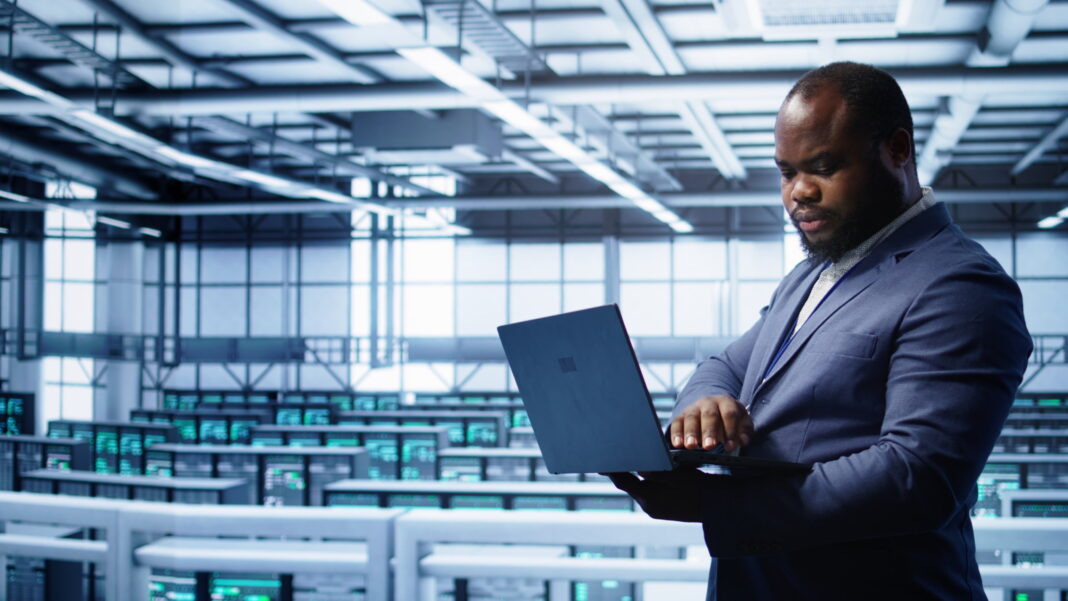The way software is developed and deployed is undergoing a fundamental shift, thanks to edge computing. Unlike traditional cloud computing, which relies on massive centralized data centers, edge computing brings processing power closer to where data is generated—whether that’s a smartphone, an industrial sensor, or a self-driving car. This shift is not just a minor optimization; it’s a complete rethinking of how computing resources are distributed, leading to faster response times, reduced bandwidth costs, and enhanced security.

Industries such as healthcare, manufacturing, autonomous vehicles, and smart cities are rapidly adopting edge computing to meet the growing demand for real-time data processing. But what exactly is driving this trend? How does edge computing differ from cloud computing, and what challenges do developers face when implementing it?
This article will explore every aspect of edge computing in software development, from its foundational principles to its real-world applications, benefits, challenges, and future potential. By the end, you’ll have a comprehensive understanding of why edge computing is becoming indispensable in modern software architecture.
What Is Edge Computing?
Definition and Core Principles
Edge computing is a distributed computing model where data processing occurs near the source of data generation rather than in a centralized cloud server. The goal is to minimize latency, reduce bandwidth usage, and improve real-time decision-making.
Key Components of Edge Computing
- Edge Devices
- These are the hardware components that generate data, such as IoT sensors, cameras, smartphones, and industrial machines.
- Example: A temperature sensor in a factory sending real-time data to a local edge server instead of a distant cloud data center.
- Edge Servers
- These are localized computing units that process data before sending only necessary information to the cloud.
- Example: A retail store using an on-premise server to analyze customer behavior in real-time without relying on cloud-based AI.
- Edge Nodes
- Intermediate points that manage data flow between edge devices and central cloud systems.
- Example: A 5G tower acting as an edge node to process data from nearby autonomous vehicles.
- Edge Data Centers
- Smaller, decentralized data centers located closer to end-users.
- Example: A micro data center in a remote oil rig processing drilling sensor data locally.
How Edge Computing Differs from Cloud Computing
| Feature | Edge Computing | Cloud Computing |
|---|---|---|
| Latency | Extremely low (milliseconds) | Higher (depends on distance to server) |
| Bandwidth Usage | Minimal (only essential data is sent) | High (all data transmitted to cloud) |
| Security | Data stays local, reducing exposure | Data travels over networks, higher risk |
| Cost | Lower long-term bandwidth costs | Higher cloud storage and processing fees |
| Offline Use | Works without internet | Requires constant connectivity |
This fundamental shift is why industries requiring instant data processing—such as autonomous driving, telemedicine, and industrial automation—are rapidly adopting edge computing.
Why Edge Computing Is Revolutionizing Software Development
1. The Need for Real-Time Processing
Many modern applications cannot afford delays. Consider:
- Autonomous Vehicles: A self-driving car must process road conditions in milliseconds. Waiting for cloud-based computations could be fatal.
- Augmented Reality (AR): AR glasses must overlay digital information instantly; any lag ruins the user experience.
- High-Frequency Trading: Stock trading algorithms require microsecond-level responses to market changes.
Edge computing eliminates the round-trip delay to the cloud, making these applications feasible.
2. Explosion of IoT Devices
With over 30 billion IoT devices expected by 2025 (Statista), centralized cloud systems struggle to handle the sheer volume of data. Edge computing distributes the workload, ensuring efficient processing.
Example: A smart factory with thousands of sensors monitoring equipment health cannot afford to send all data to the cloud. Instead, edge servers analyze data locally, sending only critical alerts to the cloud.
3. Data Privacy and Regulatory Compliance
Laws like GDPR (Europe) and CCPA (California) require certain data to remain within specific geographic regions. Edge computing allows businesses to process sensitive data locally, avoiding legal complications.
Example: A hospital using edge AI to analyze patient scans keeps data on-site rather than sending it to a foreign cloud server, ensuring HIPAA compliance.
4. Reducing Cloud Costs
Transmitting massive amounts of data to the cloud is expensive. Edge computing minimizes bandwidth usage by processing data locally and only sending essential insights to the cloud.
Case Study: A security camera system using edge AI to detect intruders only uploads footage when an anomaly is detected, cutting cloud storage costs by 90%.
5. Reliability in Low-Connectivity Areas
In remote locations—oil rigs, rural hospitals, or battlefields—internet connectivity is unreliable. Edge computing ensures operations continue uninterrupted.
Example: A drone inspecting a remote pipeline processes images locally instead of relying on a spotty satellite connection.
Key Benefits of Edge Computing in Software Development
1. Ultra-Low Latency
- Cloud Computing: Data travels to a distant server and back (100-300ms delay).
- Edge Computing: Processing happens locally (1-5ms delay).
Impact: Enables real-time applications like robotic surgery and instant language translation.
2. Enhanced Security
- Fewer Data Transmissions: Less exposure to man-in-the-middle attacks.
- Localized Encryption: Data can be encrypted at the edge before transmission.
Example: A bank processing transactions at an edge server instead of sending raw data to the cloud reduces fraud risk.
3. Scalability and Flexibility
- Modular edge architectures allow developers to deploy updates without overhauling entire systems.
- New edge nodes can be added without major infrastructure changes.
Use Case: A retail chain rolling out AI-powered checkout systems can deploy edge servers store-by-store.
4. Offline Functionality
- Critical applications (emergency response systems, industrial machines) remain operational even without internet.
Example: A military drone continues its mission even if it loses satellite connection.
5. Cost Efficiency
- Bandwidth Savings: Only 10% of IoT data needs cloud storage (McKinsey).
- Reduced Cloud Bills: Less reliance on expensive cloud computing resources.
Case Study: A logistics company using edge computing for fleet tracking reduced cloud costs by 40%.
Challenges of Implementing Edge Computing
1. Infrastructure Complexity
- Managing thousands of edge devices requires advanced DevOps and orchestration tools like Kubernetes for edge (KubeEdge).
2. Security Vulnerabilities
- Edge devices are often less secure than cloud servers, making them targets for hackers.
- Solution: Zero-trust security models and hardware-based encryption (TPM chips).
3. Lack of Standardization
- Different vendors use proprietary protocols, complicating integration.
- Emerging standards (like LF Edge) aim to solve this.
4. Limited Processing Power
- Edge devices (like sensors) have less computational power than cloud servers.
- Workaround: Lightweight AI models (TinyML) optimized for edge devices.
5. Data Synchronization Issues
- Ensuring consistency between edge and cloud databases is challenging.
- Solutions: Conflict-free replicated data types (CRDTs) and edge-to-cloud sync protocols.
Industries Leading Edge Computing Adoption
1. Healthcare
- Real-Time Patient Monitoring: Wearables analyzing vitals locally.
- AI Diagnostics: Edge servers processing MRI scans on-site.
2. Manufacturing
- Predictive Maintenance: Sensors detecting machine failures before they happen.
- Quality Control: Cameras inspecting products in real-time.
3. Retail
- Smart Checkout: Cameras and sensors enabling cashier-less stores.
- Personalized Ads: Edge AI analyzing in-store customer behavior.
4. Autonomous Vehicles
- Instant Decision-Making: Cars processing LiDAR data locally.
- V2X Communication: Vehicles communicating with traffic lights via edge nodes.
5. Smart Cities
- Traffic Optimization: Edge AI managing traffic lights in real-time.
- Energy Management: Smart grids balancing power demand locally.
The Future of Edge Computing in Software Development
1. AI at the Edge
- Lightweight machine learning models (TinyML) will enable real-time AI on low-power devices.
2. 5G and Edge Synergy
- 5G’s ultra-low latency will make edge computing even more powerful.
3. Serverless Edge Computing
- Developers will deploy edge functions without managing servers (similar to AWS Lambda but for edge).
4. Edge-Native Applications
- New software will be designed specifically for decentralized edge environments.
FAQs
Q: Does edge computing replace cloud computing?
A: No. They complement each other—edge handles real-time tasks, while the cloud manages large-scale storage and analytics.
Q: What programming languages are best for edge development?
A: Python (for prototyping), C++ (for performance), and Rust (for security-critical applications).
Q: How do I secure edge devices?
A: Use hardware-based encryption, zero-trust security models, and regular firmware updates.
Q: Can small businesses use edge computing?
A: Yes, especially in retail (smart inventory) and logistics (real-time tracking).
Q: What’s the biggest challenge in edge computing?
A: Managing a distributed network of devices securely and efficiently.
Conclusion
Edge computing is not just a trend—it’s a fundamental shift in how software is built and deployed. By bringing processing closer to data sources, it enables real-time applications, reduces costs, and enhances security. While challenges like infrastructure complexity and security risks exist, advancements in AI, 5G, and edge-native architectures are paving the way for widespread adoption.
Developers and businesses that embrace edge computing today will be at the forefront of the next wave of technological innovation. The future of software development is decentralized, and edge computing is leading the charge.

